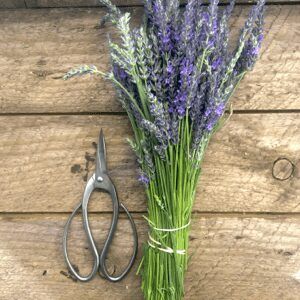
How to Prune Your Lavender
Pruning Your Lavender Bush to Ignite Growth
Pruning your lavender is critical to plant health and the longevity of the plant. When proper care is applied to your plants, lavender can last upwards of 20 years! Pruning is required, and there is definitely a technique you must follow. Without this annual care, your lavender will grow long and lanky, and typically split. Here are the steps:
Steps for Pruning Lavender Varieties
- Look for the woody growth. Old growth turns brown and woody, and this is your key reference point for the pruning. Typically, plants in year two of growth will have this established growth.
- Prune the soft growth. Measure up about 3 inches from the woody growth you have identified on your lavender, and this soft growth area will be your target pruning point.
- Get the shape right. The result of pruning your lavender should be a dome or mound looking bush.
- Deadhead during growing season. For certain varieties, a quick deadhead prune can urge a second flowering and bloom.
How Not To Prune Your Lavender
Pruning your lavender is quite simple once you know the technique. But there are certain things you should not do.
Don’t cut into the woody stems at the heart of your plant. This old growth grows slow, and may not grow new stems at all.
Don’t prune in fall. New growth will die quickly in the cold of Fall and Winter, and stress your lavender plants. Finish up pruning by end of August.
Don’t take off too much. A good rule of thumb is to only remove the top 1/3rd of the plant. Too much more and you risk the health of your lavender.
A quick guide for you to keep your plants healthy, and enjoy the bloom season after season.
cutting back lavender, harvestnig lavender, how to prune lavender, how to trim lavender, lavandula, lavender, lavender for landscaping, pruning lavender, pruning lavender bush, pruning lavender plant, trimming lavender, when to prune lavender